
Only Humans Need Apply: Winners and Losers in the Age of Smart Machines
by
Thomas H. Davenport
and
Julia Kirby
Published 23 May 2016
Like using a GPS, one can choose to follow the guidance or not follow it depending on how it reconciles.”3 In marketing, a step-up job might involve coordination and pursuit of the many opportunities for automating marketing decisions. A LinkedIn job description featured such a role for a “Sales/Marketing Automation Specialist,” who would “manage and execute marketing campaigns utilizing integrated automation and CRM [customer relationship management] platforms.” The automation specialist would also be expected to “work closely with various groups including strategy, sales, product development and account management to build, automate and monitor successful demand generation campaigns.”
…
He’s the vice president of member acquisition at Zipcar, the pioneering car-sharing service acquired by the Avis Budget group in 2013. Member acquisition means finding new customers and the primary approach to that is digital marketing—much of which is automated. Daley has been in digital marketing since 1999, but he’s not sure that anyone is an expert on programmatic buying (automated purchase of digital ads) and marketing automation. But, he admits, he works with them every day, so he might qualify as much as anyone. Until a couple of years ago, Daley says, Zipcar wasn’t that sophisticated in digital marketing. It turned over almost every decision about software platforms and automation approaches to a single digital ad agency, and it didn’t study the results in much detail.
…
An accomplished tender of an automated system can see when results are not within expected limits. Stepper-inners may also work closely with vendors as part of their jobs. Several we interviewed said they spent a good part of their time in that role. Shane Herrell, the Global Search Program manager at the software company SAS, works with (using them, not developing them) digital marketing automation programs extensively in his job. He said that he spends a lot of time working with automation software vendors. He described the challenge of working with the mind-boggling number of marketing and “ad tech” vendors: “I try to review a lot of their capabilities, but when I think they have some promising capabilities, the evaluation really begins.
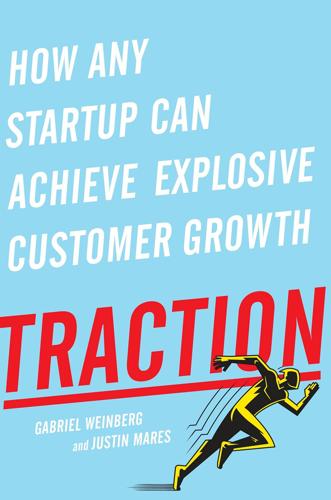
Traction: How Any Startup Can Achieve Explosive Customer Growth
by
Gabriel Weinberg
and
Justin Mares
Published 5 Oct 2015
The second key benefit to parallel product and traction development is that you get to experiment and test different traction channels before you launch anything. This means when your product is ready, you can grow rapidly. A head start on understanding the traction channel that will work for your business is invaluable. Phil Fernandez, founder and CEO of Marketo, a marketing automation company that IPO’d in 2013, talks about this benefit: At Marketo, not only did we have SEO [search engine optimization] in place even before product development, we also had a blog. We talked about the problems we aimed to solve. . . . Instead of beta testing a product, we beta tested an idea and integrated the feedback we received from our readers early on in our product development process.
…
You make useful tools like calculators, widgets, and educational microsites to get your company in front of potential customers. These tools generate leads and expand your customer base. In this chapter we present examples of companies like HubSpot and RJMetrics that have successfully used this underutilized channel for rapid growth. ENGINEERING AS MARKETING STRATEGY HubSpot, a marketing automation software company, has reached tens of millions in revenue in a few short years. One key to its success is a free marketing review tool the company created called Marketing Grader. When you enter your site’s Web address into Marketing Grader, you get back a customized report about how well you’re doing with your online marketing (social media mentions, blog post shares, basic SEO).
…
For example, many companies require an email address and some company information in order to access materials on their site (e.g., a white paper or e-book). This information is then used to determine which prospects are worth spending more time on. For example, HubSpot, which sells $5,000-plus-per-year marketing automation software, uses this information to determine how much time it should invest in a lead. If it gets a lead from someone running a small business on Etsy or eBay, HubSpot may choose to invest less time in that prospect because chances are someone running a smaller business is just not a good fit for its offering.
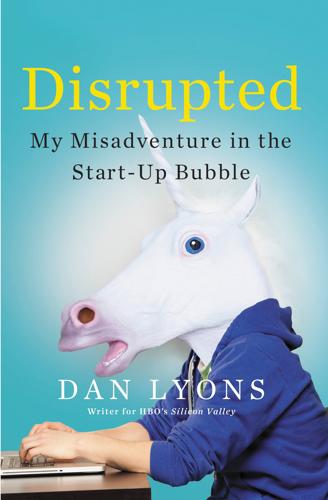
Disrupted: My Misadventure in the Start-Up Bubble
by
Dan Lyons
Published 4 Apr 2016
Companies that use HubSpot software are able to find new customers, boost their sales, and save money. That’s the pitch. In fact the early days were not quite so tidy. People who were around in those days later tell me that Halligan and Shah considered other things before deciding to make marketing automation software. What’s more, I’ve been told, for the first five years, HubSpot’s product wasn’t very good. It was so bad, in fact, that according to one former engineer HubSpot’s own marketing department couldn’t depend on it and instead used marketing software made by one of HubSpot’s rivals. “The fucking product was a disaster,” the engineer recalls.
…
These are just fairly simple programs that automate basic marketing chores, like sending email to a list of contacts. But friends of mine who use HubSpot tell me the software can more than hold its own against other marketing software products. One market research website, which rates software based on customer reviews, ranks HubSpot in first place among marketing automation programs. Better yet, all those years of selling a weak product have forced HubSpot to get really good at generating hype. The vast majority of HubSpot’s employees work not in engineering or software development, but in sales and marketing. They spend their days cold-calling customers, cranking out blog posts, posting automated email campaigns, flooding Twitter and Facebook with promotional messages, running webinars and podcasts, talking to user groups, and preparing for HubSpot’s big annual customer conference, an extravaganza with musical acts, comedians, and inspirational speakers.
…
Now he has a chance to tell people—and by people, I mean investors—what HubSpot does. Most people have never heard of HubSpot. Even people who have heard of HubSpot sometimes think it is a marketing agency or a consulting firm. Halligan should have a very simple brief: HubSpot is a cloud software company, selling marketing automation software and run by people from MIT. HubSpot is a leading player in a very hot market space, and the company is growing like crazy. That’s it. That’s all he needs to do. Talk about naps and plug the company. But during the interview Halligan starts rambling and talking about how HubSpot likes to hire really young people.
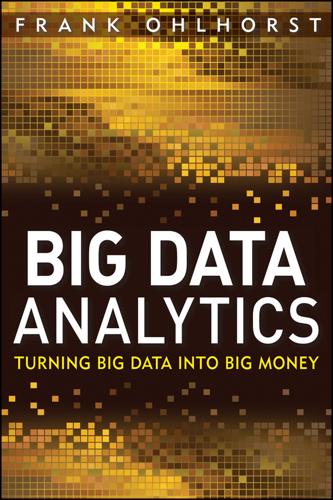
Big Data Analytics: Turning Big Data Into Big Money
by
Frank J. Ohlhorst
Published 28 Nov 2012
Abrahams and Mingyuan Zhang Foreign Currency Financial Reporting from Euros to Yen to Yuan: A Guide to Fundamental Concepts and Practical Applications by Robert Rowan Human Capital Analytics: How to Harness the Potential of Your Organization’s Greatest Asset by Gene Pease, Boyce Byerly, and Jac Fitz-enz Information Revolution: Using the Information Evolution Model to Grow Your Business by Jim Davis, Gloria J. Miller, and Allan Russell Manufacturing Best Practices: Optimizing Productivity and Product Quality by Bobby Hull Marketing Automation: Practical Steps to More Effective Direct Marketing by Jeff LeSueur Mastering Organizational Knowledge Flow: How to Make Knowledge Sharing Work by Frank Leistner The New Know: Innovation Powered by Analytics by Thornton May Performance Management: Integrating Strategy Execution, Methodologies, Risk, and Analytics by Gary Cokins Retail Analytics: The Secret Weapon by Emmett Cox Social Network Analysis in Telecommunications by Carlos Andre Reis Pinheiro Statistical Thinking: Improving Business Performance, Second Edition by Roger W.
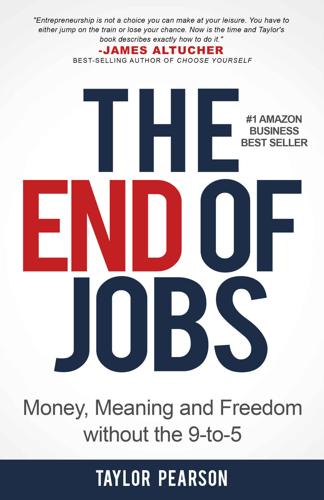
The End of Jobs: Money, Meaning and Freedom Without the 9-To-5
by
Taylor Pearson
Published 27 Jun 2015
From there he bought a struggling SEO tool, HitTail, and revitalized it using everything he’d learned in earlier businesses to grow it by 1000% over the course of the next year. He used Facebook ads, partnerships, banner ads, and SEO—all skills he’d acquired running his smaller businesses. Now he’s building Drip, a larger SaaS app than HitTail, that does email marketing automation. Over the course of his career, he stair stepped his way up into bigger and better businesses. That ability to stair step has never been possible before. It’s only become possible in the last ten years due to the effects of the democratization of distribution and production, along with the creation of new markets.
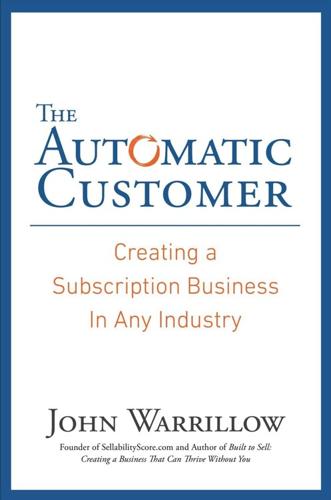
The Automatic Customer: Creating a Subscription Business in Any Industry
by
John Warrillow
Published 5 Feb 2015
If the exact same offering is going to be available tomorrow, it is human nature to wait until you absolutely need to act unless there is something you will miss out on by procrastinating. Therefore, as cheesy and clichéd as it is, one way to get people to subscribe is to set fire to the bridge and artificially simulate a burning platform that causes the customer to act to avoid losing something. When our company subscribed to a marketing automation software provider, we spent a few months deliberating the decision. As we approached the end of the buying cycle, I was getting ready for a family trip. Sensing that the momentum of the sale was about to be lost, my salesperson put a compelling offer in front of us: sign up by the end of the month and the license would cost only $1,000 a month instead of the $2,400 a month the company normally charges.
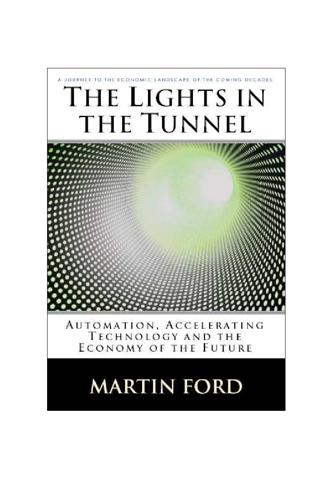
The Lights in the Tunnel
by
Martin Ford
Published 28 May 2011
Please purchase only authorized electronic editions. Your support of the author’s rights is appreciated. This book is available for purchase in paper and electronic formats at: www.TheLightsintheTunnel.com CONTENTS A Note to Kindle Users Introduction Chapter 1: The Tunnel The Mass Market Visualizing the Mass Market Automation Comes to the Tunnel A Reality Check Summarizing Chapter 2: Acceleration The Rich Get Richer World Computational Capability Grid and Cloud Computing Meltdown Diminishing Returns Offshoring and Drive-Through Banking Short Lived Jobs Traditional Jobs: The “Average” Lights in the Tunnel A Tale of Two Jobs “Software” Jobs and Artificial Intelligence Automation, Offshoring and Small Business “Hardware” Jobs and Robotics “Interface” Jobs The Next “Killer App” Military Robotics Robotics and Offshoring Nanotechnology and its Impact on Employment The Future of College Education Econometrics: Looking Backward The Luddite Fallacy A More Ambitious View of Future Technological Progress: The Singularity A War on Technology Chapter 3: Danger The Predictive Nature of Markets The 2008-2009 Recession Offshoring and Factory Migration Reconsidering Conventional Views about the Future The China Fallacy The Future of Manufacturing India and Offshoring Economic and National Security Implications for the United States Solutions Labor and Capital Intensive Industries: The Tipping Point The Average Worker and the Average Machine Capital Intensive Industries are “Free Riders” The Problem with Payroll Taxes The “Workerless” Payroll Tax “Progressive” Wage Deductions Defeating the Lobbyists A More Conventional View of the Future The Risk of Inaction Chapter 4: Transition The Basis of the Free Market Economy: Incentives Preserving the Market Recapturing Wages Positive Aspects of Jobs The Power of Inequality Where the Free Market Fails: Externalities Creating a Virtual Job Smoothing the Business Cycle and Reducing Economic Risk The Market Economy of the Future An International View Transitioning to the New Model Keynesian Grandchildren Transition in the Tunnel Chapter 5: The Green Light Attacking Poverty Fundamental Economic Constraints Removing the Constraints The Evolution toward Consumption The Green Light Appendix / Final Thoughts Are the ideas presented in this book WRONG?
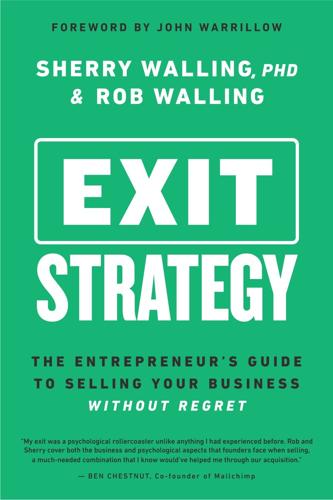
Exit Strategy
by
Sherry Walling, Rob Walling
Published 22 Nov 2024
For Adii Pienaar, serial founder of companies including WooCommerce, Conversio, and Cogsy, external factors like a highly competitive market and plateauing growth made him start thinking it was time to look for a buyer for Conversio. But it was the internal restlessness that pushed him over the edge. “Building email marketing automation software is not my life’s work,” he told us. “It’s not the thing that I want to do for the next ten or twenty years.” One way to avoid making a rash decision is to set a deadline for yourself. Give yourself six months to examine the root cause of your restlessness, gather all the data you can as well as advice from smart people you know, and then make the decision.

Electronic and Algorithmic Trading Technology: The Complete Guide
by
Kendall Kim
Published 31 May 2007
They buy stock and wait to sell it until good news raises its prices (see Exhibit 5.3). Growth managers react to good news, which hopefully leads to more good news. While growth managers buy on good news, value managers sell. Consequently growth managers have a clear trading disadvantage (see Exhibit 5.4) because they buy when the buying interest dominates the market. Automated algorithms cannot take this into account in trading.5 Disadvantages of Algorithms Opaque 5% Illiquid Names 5% 8% Average Executions Lack of Info Flow 11% Cause of Fragmentation 11% Response 65% 14% Easily Gamed 19% Inability to React to Change Miss Large Blocks 0% 27% 5% 10% 15% 20% 25% 30% Exhibit 5.4 Source: TABB Group, June 2005. 5 Jedrzeij Bialkowski, Serge Darolles, and Gaëlle LeFol, ‘‘Decomposing Volume for VWAP Strategies’’ (Working Papers no. 2005-16, Centre de Recherche en Economique et Statistique), http://www.crest.fr/doctravail/document/2005-16.pdf. 58 Electronic and Algorithmic Trading Technology 5.5 VWAP Definitions VWAP strategies (see Table 5.2) are utilized to maximize best execution and ensure the lowest trading cost.

Big Data at Work: Dispelling the Myths, Uncovering the Opportunities
by
Thomas H. Davenport
Published 4 Feb 2014
Simplot, 11 Java language, 89, 123 Jimenez, Joe, 66 job growth for data scientists, 111, 111f, 184–185 John Deere, 47 Johnson & Johnson, 54 Kaplan Inc., 16, 41, 66 Karu, Zoher, 143 Keeping Up with the Quants (Davenport and Kim), 93 Klamka, Jake, 104 Kyruus, 161, 162, 168 large companies action plan for Analytics 3.0 for managers in, 204 automating existing processes in, 190–193 big data objectives in, 178–180 big data’s value proposition in, 187 big data used in, 175–176 chief analytics officer role in, 202 company case studies in, 178, 181, 183, 186–187, 187–188, 192, 196, 198 data scientists and teams in, 201 historical context for analytics and big data in, 194–197 Index.indd 223 integrated and embedded models in, 199–200 hybrid technology models in, 200–201 integrating organizational structures and skills in, 182–185 managers’ views of big data in, 176–177 multiple data types in, 197–199 prescriptive analytics used in, 202–203 return on investment in, 188–189, 190f speed of technologies and methods in, 199 leadership, 139–143, 151 Library of Congress, 1 life-cycle management, 129 LinkedIn, 16, 65, 82, 83, 92, 104, 127, 146, 148, 153, 155, 157, 158–159, 160–161, 164, 165 People You May Know (PYMK) feature of, 23–24, 140–141, 148, 158 Lockheed Martin, 78 Louisiana State University, 102 machine learning, 4t, 29, 88, 96, 102, 110–111, 113, 114t, 118, 124, 183, 199 Macy’s, 63–64, 179, 183 Macys.com, 63, 182, 183 management big data technology perspective of, 15–18 big data usage and changes in, 27–28 leadership in big data initiatives and, 139–143, 151 new roles in, 141–143 managers action plans for, 30, 57, 84, 112, 134, 151–152, 173, 204 big data skills for, 106–110 in large companies, 176–177 retraining of, 112 visual analytics and, 109 manufacturing, 8t, 52–53, 56, 77, 193, 197 MapReduce framework, 29, 89, 114t, 116, 122, 123, 127f, 132, 148, 157, 199 marketing automated narrative for, 126 banking and, 44, 49, 55, 109 big data strategy and, 5, 8t, 66, 69, 71, 193 B2B firms and, 45–46 Caesars Entertainment and, 179 03/12/13 2:04 PM 224 Index marketing (continued) data-based products and services for, 75, 79, 92, 163, 171, 182 LinkedIn’s use of, 158–159 managerial roles for, 141–142 organizational structure and, 15, 18 retail and, 37–38, 63, 71, 183, 192 sources of data for, 50–51 targeting offers to, 27, 55, 63–64, 65, 67, 72, 79, 107, 108–109, 128, 142, 144, 179, 180, 197 Massachusetts Institute of Technology (MIT), 102, 142, 202, 206 massively parallel processing (MPP), 189, 195, 208 Matters Corp, 69 Mayer, Marissa, 166 Mayo Clinic, 181 McAfee, Andy, 27, 206 McGraw-Hill, 143 McKinsey, 185 media and entertainment firms, 5, 42, 44, 48–49, 54, 179–180 medical record systems, 9, 43, 44–45, 72, 121–122, 156, 181 MetaScale, 192 Me-trics, 13 Microsoft, 14, 37, 163 Microsoft Hadoop, 115 Microsoft Windows Azure, 163.
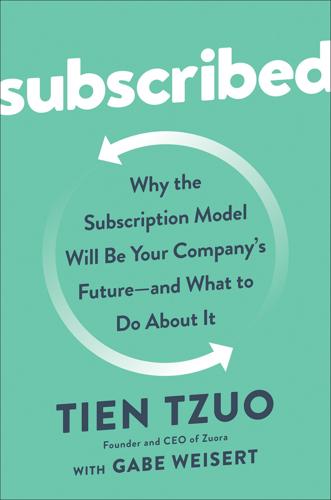
Subscribed: Why the Subscription Model Will Be Your Company's Future - and What to Do About It
by
Tien Tzuo
and
Gabe Weisert
Published 4 Jun 2018
At first, IT departments eyed this stuff warily, since the idea of businesses buying all these applications right off the shelf felt sketchy. But once their security issues got resolved, they realized that all these SaaS applications made them much more responsive. Need an easy-to-use expense management app? I’ll whip up one of those right away with Concur. Need a marketing automation tool? Marketo has you covered. Want to share and secure files more easily? Box to the rescue. Can you believe it? IT got even cooler! But lately, I grieve to report, there have been some bumps in the road. IT is starting to drag again. Businesses are starting to ask questions that IT can’t answer.
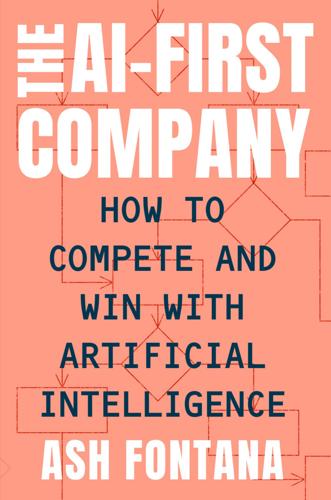
The AI-First Company
by
Ash Fontana
Published 4 May 2021
The key, for data brokers, is to sell data that needs to be refreshed at regular intervals, such as stock prices. Data brokers typically make data available through an API, from which the customer requests certain data points and receives them in a structured format. The data is often piped into other applications such as marketing automation tools. This is often referred to as data as a service (DaaS) because the data is served to the application rather than received in bulk. Breaking Down the Brokers Marketing data brokers typically sell profiles of individuals so that brands, political parties, and other entities can target them directly.
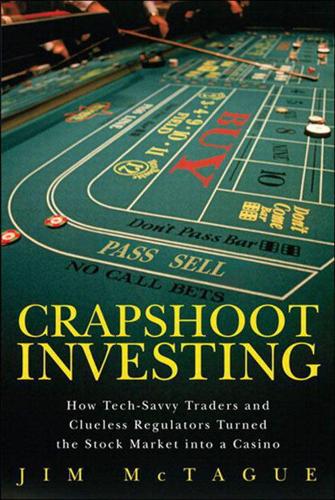
Crapshoot Investing: How Tech-Savvy Traders and Clueless Regulators Turned the Stock Market Into a Casino
by
Jim McTague
Published 1 Mar 2011
Some members acquainted with the work of Senator Kaufman saw a direct link between the Flash Crash and high-frequency traders. In his opening statement on May 11, Representative Kanjorski said, “In recent years, high-frequency trading has exploded. Barely a blip two decades ago when technology constraints and growth last crashed the markets, automated traders today move in only seconds and make up as much as two-thirds of daily trading volume. Their decisions to trade or not to trade can produce real consequences.” Another Congressman at the hearing referred to high-frequency traders as parasites. Regulators ended up breaking about 21,000 trades on May 6 that they said clearly were erroneous, including 7,000 stubs trades involving 200 separate securities (see Table 6.1).

Reinventing Capitalism in the Age of Big Data
by
Viktor Mayer-Schönberger
and
Thomas Ramge
Published 27 Feb 2018
But this reliance on retraining workers assumes that the data revolution will unfold much as the Industrial Revolution did: initially displacing many workers but eventually leading to a variety of new jobs. Retraining accepts that job creation happens when human ingenuity is paired with the magic of the market. It has a positive, empowering ring, suggesting that people can rejoin the workforce if they acquire new skills. But as our economy transitions to data-rich markets, automation will increasingly replace white-collar workers, like the insurance assessors at Fukoku, who have substantial expertise and those with administrative and managerial skills. It may be relatively easy to look at the skills that are needed today and design training so people can acquire them, but that strategy probably will not prepare workers for what will be needed tomorrow.

5 Day Weekend: Freedom to Make Your Life and Work Rich With Purpose
by
Nik Halik
and
Garrett B. Gunderson
Published 5 Mar 2018
Leverage Content with Technology Content is a powerful tool for implementing education-based marketing, claiming authority in the marketplace for your business, and telling your business story. Here are a few ways to leverage content: Blog articles Videos Audio recordings Books E-books White papers Email newsletters Workbooks Customer Relationship Management (CRM) and online marketing automation software Email marketing software Educational and content curation websites Online landing/sales pages for lead capture Automated email sequences Social media Content and technology are critical for personality-based businesses. They make people feel like they know you even if they’ve never met you in person.
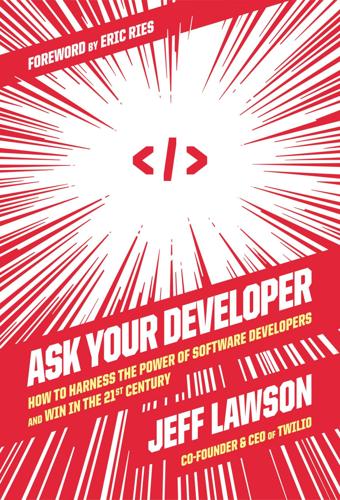
Ask Your Developer: How to Harness the Power of Software Developers and Win in the 21st Century
by
Jeff Lawson
Published 12 Jan 2021
The sales chief didn’t need to know anything about IT, and didn’t need to rack up servers or install software or hire IT staff to maintain the system. Just fill out a form, and you were in business. Over time, SaaS companies sprang up to serve every line-of-business owner. The chief financial officer (CFO) reached out to NetSuite, provider of SaaS financials software. The chief marketing officer signed up for Marketo, provider of SaaS marketing automation. The chief human resources (HR) officer signed up for Workday, provider of SaaS HR information software. You paid based on the number of employees who were using the software. You didn’t have to worry about data centers or per-CPU licenses anymore. In fact, many products were so inexpensive to get started that a small team could just put it on a credit card and expense it.
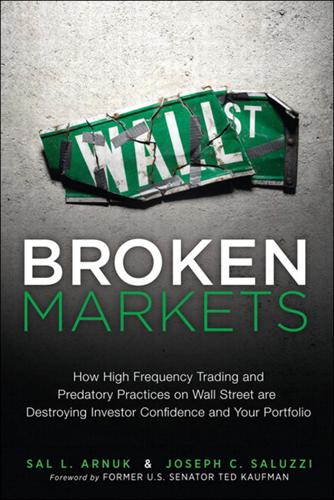
Broken Markets: How High Frequency Trading and Predatory Practices on Wall Street Are Destroying Investor Confidence and Your Portfolio
by
Sal Arnuk
and
Joseph Saluzzi
Published 21 May 2012
HFT’s reputation has gotten so poor that lobbyists hired by HFT firms have tried to change the name or discourage its use in the media. In a 2010 newsletter, Joe Ratterman, the president of BATS, a stock exchange that caters to HFT firms, urged the industry to resist using the term. “Put HFT on your firm’s restricted word list,” he said. As an alternative, he suggested “Trading and Market Automation, or TMA,” adding that BATS members should “preserve our current equity markets against baseless sound bites from those who don’t fully understand the markets.”2 The reality is it doesn’t matter what you call it. It is what it is. No amount of lipstick can make a pig pretty, except maybe to another pig.
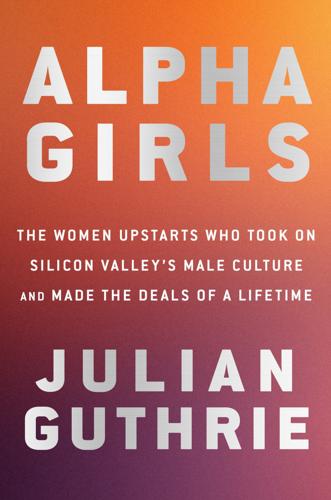
Alpha Girls: The Women Upstarts Who Took on Silicon Valley's Male Culture and Made the Deals of a Lifetime
by
Julian Guthrie
Published 15 Nov 2019
Rao’s parents had immigrated to the United States from southern India—her father from Madras and her mother from Bangalore. Her mother had a master’s degree in physics and her father was an accomplished chemist. Naficy’s parents were Iranian and Chinese and had fled Iran for America in 1979, when the shah was toppled from power, when Mariam was nine. Naficy’s first idea for a start-up was a marketing automation software company. Rao wasn’t impressed. “That sounds interesting but kinda boring,” she said. “I’ve heard that something like ninety percent of start-ups fail. We should do something where we are the target audience, where it’s fun and interesting, and where our unique point of view can help us.”
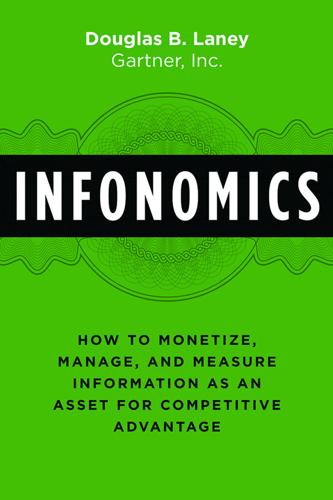
Infonomics: How to Monetize, Manage, and Measure Information as an Asset for Competitive Advantage
by
Douglas B. Laney
Published 4 Sep 2017
Data and analytics leaders, along with business leaders and enterprise architects, all need to be aware of commercial information sources that relate to their market and assess their potential, as well as work with business partners to encourage the availability of their information. The managed network service provider, DSCI, typifies the way many companies leverage syndicated data. At the tail end of a marketing automation implementation project, DSCI’s marketing communications manager, Stacey Corbin, was trying to determine which data should be imported into the sales system, and employed Dun & Bradstreet to help cleanse and enrich its customer data with nearly four dozen additional fields of information. Doing so enabled DSCI to monetize this combined information by improving email deliverability by 42 percent and more than doubling conversion rates from 5 percent to 11 percent.15 Public Data Many governments have also begun opening their information coffers as a matter of principle or dictum.
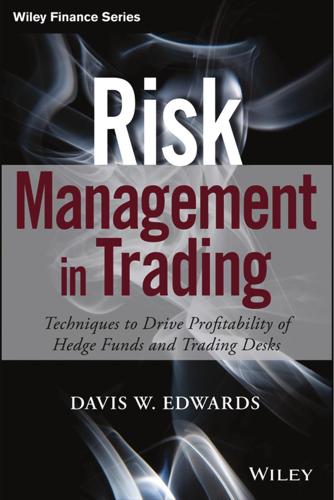
Risk Management in Trading
by
Davis Edwards
Published 10 Jul 2014
Systems can be designed to prevent execution of unusually large volumes or unusually sized transactions without the proper authorization override. Recommended Execution Strategies. Trading systems can be designed to monitor market conditions and recommend trading strategies. For example, a system might recommend that a large trade be broken into several pieces and traded over several hours rather than all at once. Changes in Market. Automated systems can provide warning to identify large changes in prices, volumes, the credit rating of a trading partner, or other changes in market behavior to help traders get ahead of changing markets. Pattern Recognition. Unusual trading behavior can be identified using pattern recognition. For example, a trading system might identify simultaneous purchases and sales in the same asset (wash trades) that are often an indicator of market manipulation
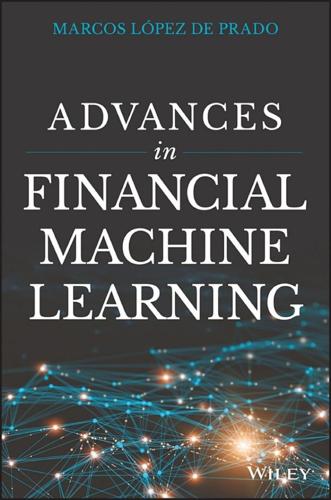
Advances in Financial Machine Learning
by
Marcos Lopez de Prado
Published 2 Feb 2018
López de Prado (2016): “Stock portfolio design and backtest overfitting.” Journal of Investment Management, Vol. 15, No. 1, pp. 1–13. Available at https://ssrn.com/abstract=2739335. Bailey, D., J. Borwein, M. López de Prado, A. Salehipour, and J. Zhu (2016): “Backtest overfitting in financial markets.” Automated Trader, Vol. 39. Available at https://ssrn.com/abstract=2731886. Bailey, D., J. Borwein, M. López de Prado, and J. Zhu (2017b): “Mathematical appendices to: ‘The probability of backtest overfitting.’” Journal of Computational Finance (Risk Journals), Vol. 20, No. 4. Available at https://ssrn.com/abstract=2568435.
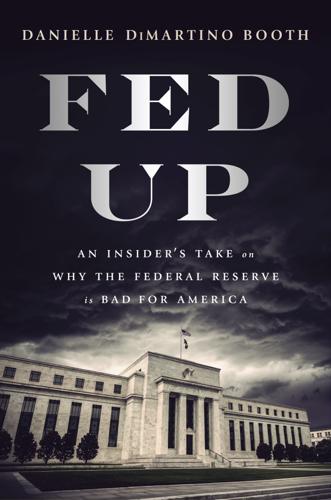
Fed Up: An Insider's Take on Why the Federal Reserve Is Bad for America
by
Danielle Dimartino Booth
Published 14 Feb 2017
Step this way, Madame Danielle will read your future. The mortgage market in the United States had reached a record $8.7 trillion, more than twice the size of the U.S. Treasury bond market, so big and so interconnected it had the power to take down the American economy. Whenever there were large swings in the Treasury market, automated sell or buy orders were triggered in the mortgage market. The collateral backing mortgages was stretched precariously thin; one in ten households had zero to negative home equity. One quarter of the mortgages written in the previous year had been subprime—and the rate of subprime delinquencies was pushing 12 percent.

Unknown Market Wizards: The Best Traders You've Never Heard Of
by
Jack D. Schwager
Published 2 Nov 2020
If I was only in the T-note position and wasn’t also in the S&P, which rallied, I would have been more inclined to conclude that my trade hypothesis was wrong, which turned out not to be the case. What had happened was that there was an impending auction weighing down the interest rate markets, and once the auction was out of the way, T-notes never looked back. So I have learned not to concentrate my trade ideas in a single market. Over time, increased market automation and high-frequency-trading algorithms have made execution harder and eroded my edge on some very short time frame strategies. As a result, I focus primarily on higher conviction trades and trade less frequently during the month, but take on more risk per trade to reflect the conviction level.

Madoff: The Final Word
by
Richard Behar
Published 9 Jul 2024
Among them: chairman of the National Securities Clearing Corporation (NSCC), a company owned by banks and brokers that performs the actual post-trade exchanges of securities on behalf of buyers and sellers; member of an SEC trading committee; chairman, intermittently, of three NASD committees, on market surveillance, regulatory matters, and market automation. (The NASD, or National Association of Securities Dealers, was once a self-regulatory organization for the industry, replaced in 2007 by FINRA.) A scale drawing of the nineteenth floor, dated July 2008 (five months before Madoff’s arrest), shows the trading desk, with seats for (in order): Andrew, Peter, Bernie, and Mark.
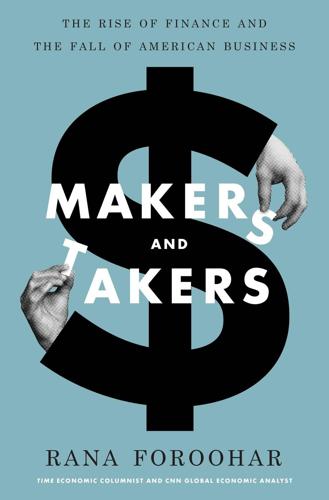
Makers and Takers: The Rise of Finance and the Fall of American Business
by
Rana Foroohar
Published 16 May 2016
As communication between corporate divisions became harder, numbers—and the absolute truth they were perceived to hold—became increasingly important, the only real information that firms could marshal to make decisions. No company better exemplified this than GM. While Henry Ford had incorporated Taylorist notions of job precision into his factories, which was one of the reasons he could churn out so many Model Ts, it was GM that first combined both the practical details of mass-market automation with the intellectual underpinnings of efficiency theory, by adopting the Taylorist philosophy of completely separating labor and management. As Sloan himself said at the time, he didn’t want high-level managers to know too much about the products the company was producing; their job was simply to look at the spreadsheets and, in a rational way, make decisions about which divisions were working well and which ones weren’t, based solely on accounting data.
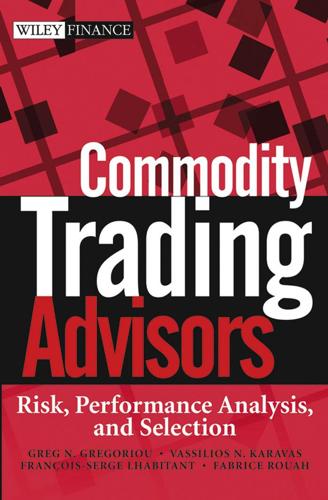
Commodity Trading Advisors: Risk, Performance Analysis, and Selection
by
Greg N. Gregoriou
,
Vassilios Karavas
,
François-Serge Lhabitant
and
Fabrice Douglas Rouah
Published 23 Sep 2004
Most CTAs follow a disciplined and systematic approach by prioritizing capital preservation, controlling potential losses, and protecting potential gains. The risk they initially take for each trade is usually small, but the size of positions may increase progressively if the detected trends are stable and verified. However, in adverse or volatile markets, automated stops are executed to limit losses. The basic trend-following programs are relatively simple. One example is an envelope breakout system. If a market is trading sideways in a fairly narrow range, the program might suggest no position. A breakout on the upside or the downside could trigger an entry.
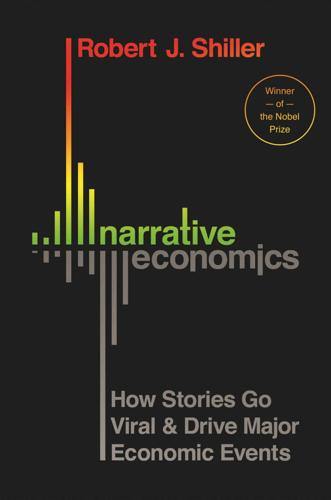
Narrative Economics: How Stories Go Viral and Drive Major Economic Events
by
Robert J. Shiller
Published 14 Oct 2019
See also scripts social sciences: controlled experiments in, 78; study of popular narratives in, 15 sociology: economics learning from, 78; narratives central to social change and, 32–33; storytelling and, 15 Socrates, 34 Something to Look Forward To (Rhys-Williams), 210 source monitoring, 84, 307n21 S&P/CoreLogic/Case-Shiller home price index, 216, 222 speculative bubbles: feedback loop of prices in, 216–17; information cascades and, 300; resembling sexual selection outcomes in animals, 65; valuation of Bitcoin seen as, 4, 5, 7 speculative investments: flipping and, 223–24; real estate as simplest of, 221; in undeveloped land, 220–21 speculative markets: before crash of 1929, ix, 125–26, 231; Keynes’s explanation of, 63–64 spending: boycott narrative and, 240, 254; hesitation during a recession, 75; postponed after World War I, 245–46, 249; postponed after World War II, 256; postponed during 1957–58 recession, 264; postponed during Great Depression, 129, 253–55; postponed in response to rising prices, 239; reduced by fear of automation, 201; reduced in 1973–75 recession, 256–57; revived after depression of 1920–21, 251; Roosevelt’s Depression fireside chat and, 278; women making most decisions in 1920s and 1930s, 254. See also boycott narrative; consumer confidence narrative; consumption Sproul, Allan, 262 Star Wars trilogy (Lucas), 203 Steinbeck, John, 131 Sternberg, Robert, 79–80 Steve Jobs (Isaacson), 208 Stewart, William Morris, 166 stimulus. See economic stimulus stock market: automated advisers for, 275; biggest expansion in US history, 1974–2000, 206; conversations and news media during corrections, 75; Keynes’s “beauty contest” metaphor and, 63; prices as indicator of public confidence, 129, 228; questionnaire surveys of investors, 285; speculative bubbles in, 216–17; survey of investors’ decision-making, 298–99; World War I and, 93–94, 283; World War II and, 94, 283, 308n6 stock market boom in 1920s: baffling to economists, 230; crowd psychology and, 119; Groucho Marx’s take on, 133; ticker projector and, 228–29 stock market boom in 1990s, 109, 206 stock market bubbles, 228; popping in 2000, 29, 83 stock market crash narrative, 228–29, 232–33, 232f; exaggerated assessments of risk and, 67; in Great Depression, 252; in Great Recession of 2007–9, 272; idea of divine punishment and, 236; lingering today, 238 stock market crash of 1929: American Dream narrative and, 231; battle between Wall Street and the Fed prior to, 126; blamed on surplus of goods produced by technology, 186, 192; boom and crash going viral after, 229; consumption demand falling immediately after, 307n3; disillusionment with optimistic predictions and, 126–28; economists’ puzzlement over, 229–30; evidence of danger prior to, 231–32; Fisher’s “permanently high plateau” phrase and, 75–76; high price-earnings ratio prior to, 231–32; moral narratives about, 235–36; narrative of human folly associated with, 228; narratives in 1920s and, ix–x, 72; overproduction or underconsumption theory and, 188; references to 1920–21 depression during, 252–53; rising unemployment prior to, 185–86; shoeshine boy narrative and, 236–37; “stock market crash” reminding us of, 17; suicide narratives associated with, 233–35 stock market crash of 1987: discussion of portfolio insurance and, 93; learned about by word of mouth, 89; narrative compared to 1929, 235; narrative of, 232f, 233; news media reminding public about, 76 stock price indexes: declining from 1929 to 1932, 230; public attention to, beginning in 1920s and 1930s, 97; public fascination with, 229 stories: basic structures of, 15–16; brain structure and, 54; emotion revealed in, 79; narrative as particular form of, 36; preference to share information in form of, 54; revealing personal values, 15; spread if we think others will spread them further, 63, 64; thinking in analogies and, 17.

A First-Class Catastrophe: The Road to Black Monday, the Worst Day in Wall Street History
by
Diana B. Henriques
Published 18 Sep 2017
Becker Agriculture Department AIG Allstate American Banker American Bankers Association American Law Institute American Stock Exchange (Amex) Black Monday and options trading American Stock Exchange index Anderson, Roger E. Annunzio, Frank antitrust apartheid divestment Apple Computer arbitrage. See also index arbitrage Arizona Stock Exchange asbestos lawsuits Asian markets AT&T pension fund audit trail rules Australian market automated trading Automobile Club of Southern California pension fund Bache Halsey Stuart Shields Bacot, J. Carter bailouts Baker, Howard H., Jr. Baker, James A., III Balles, John J. bank holding companies bank holiday banking crisis of 1984 Bank of America Bank of England Bank of New York bank regulators.

Superintelligence: Paths, Dangers, Strategies
by
Nick Bostrom
Published 3 Jun 2014
However, many of them contain components that might also play a role in future artificial general intelligence or be of service in its development—components such as classifiers, search algorithms, planners, solvers, and representational frameworks. One high-stakes and extremely competitive environment in which AI systems operate today is the global financial market. Automated stock-trading systems are widely used by major investing houses. While some of these are simply ways of automating the execution of particular buy or sell orders issued by a human fund manager, others pursue complicated trading strategies that adapt to changing market conditions. Analytic systems use an assortment of data-mining techniques and time series analysis to scan for patterns and trends in securities markets or to correlate historical price movements with external variables such as keywords in news tickers.

Tools of Titans: The Tactics, Routines, and Habits of Billionaires, Icons, and World-Class Performers
by
Timothy Ferriss
Published 6 Dec 2016
I didn’t want to have to craft beautiful templates and ship out gorgeous, magazine-worthy missives. Ramit convinced me to send plain-text email for my 5-Bullet Friday newsletter, which became one of the most powerful parts of my business within 6 months. Some Tools of His Trade Infusionsoft: Complete sales and marketing automation software for small businesses, with a particular focus on “funnels” Visual Website Optimizer: A/B testing software for marketers Advice from a Mentor “Tactics are great, but tactics become commoditized.” TF: If you understand principles, you can create tactics. If you are dependent on perishable tactics, you are always at a disadvantage.

Trading and Exchanges: Market Microstructure for Practitioners
by
Larry Harris
Published 2 Jan 2003
Traders with shrill voices—typically women—have an advantage over traders with bass voices because high-frequency sounds are highly directional. Their voices penetrate through the noise and easily attract attention. These anatomical characteristics give some traders an advantage in oral markets. They are meaningless in automated markets. Automated markets favor traders with good keyboard skills and abstract visualization skills. These issues worry some traders when markets convert from floor-based systems to electronic systems. Automated markets also favor traders who use computer systems to generate their orders. Such systems can monitor electronic data feeds and respond instantly to new information.